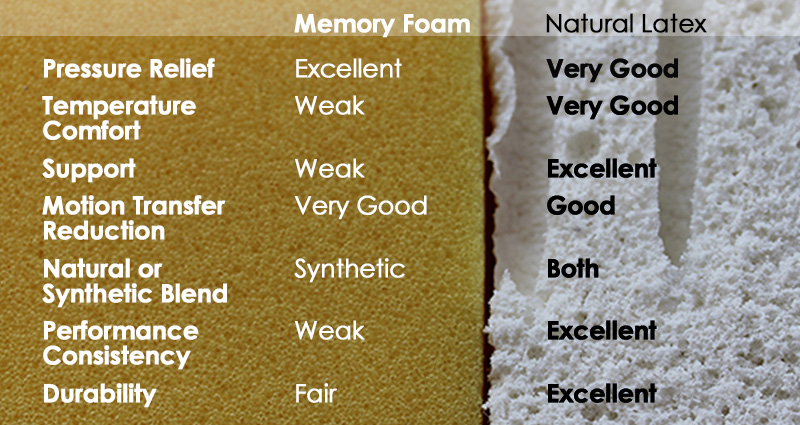Choosing your next mattress? The most important ingredient is the foam it contains. Today, most mattress stores feature a bewildering array of foam varieties—and terms. Here’s how to decide between two contenders: latex and memory foam.
Latex
Latex comes in two basic categories—natural or not.
Synthetic or blended latex
Synthetic latex is made of petroleum-based oils and chemical additives. Some blends include a small amount of rubber. Chemicals typically added include formaldehyde and flame retardants, which have been proven dangerous to health. They increase risks of cancer, obesity, infertility, and developmental brain disorders including autism and ADHD. Some synthetic foams (with names such as “bio” or “eco” or “soy” foam) also contain plant oils.
Chemicals from these foams migrate into household air and dust, either as off-gassing vapor or in microscopic particles that puff into indoor air every time the foam is pressed by the user. Like tiny chemical sponges, the particles are absorbed into ordinary house dust. Infants and children receive the greatest exposure and carry the highest chemical load in their bodies.
Natural latex
Natural latex is made from rubber tree sap that is whipped into liquid foam in a centrifuge, poured into molds and steam baked. The highest-quality natural latex foam contains 95% pure rubber. Some is also certified organic. Tiny amounts of antioxidants and a few synthetic additives are added to produce natural latex foam. Chemical flame retardants are not.
Brands advertising “100% pure” or “100% natural” latex are using inaccurate language, because “100%” is an absolute term. If “100% pure” rubber sap were baked with no additional ingredients, it would turn into unusable goo that could not be processed into foam. A simple analogy would be putting “100% milk” into the oven expecting a fluffy custard to come out.
Detecting the Difference
The best way to confirm whether natural latex is being advertised honestly is to view objective, independent certifications.
Memory Foam
Memory foam is a type of polyurethane foam with added chemicals. Memory foam changes its shape due to a chemical reaction triggered by trapped body heat. Proprietary formulas for memory foam vary, but the action is generally the same. Heat trapped beneath the sleeper causes the foam to conform to body shape.
There is no “natural memory foam”—this misleading claim has led to disciplinary action by the FTC. The addition of some latex, scents and hydrolyzed corn protein (MSG) to a formula does not justify the false label. MSG is made by prolonged boiling of proteins in strong acid (usually hydrochloric acid) or by fermentation.
How Memory Foam Feels
The primary attraction is initial pressure relief. It’s a novel sensation to feel memory foam contouring closely to the body. Because the reaction requires trapped heat, however, every time a sleeper changes position, the memory foam must be re-heated to fully contour again. Repeated time lags for re-contouring can cause restless sleep.
Excess heat can hamper sleep as it builds up between the sleeper’s body and the memory foam. New formulas with added cooling chemicals have been developed (similar to chemicals in gel-infused foams).
Durability Issues
Most memory foam tends to stop responding fully after a few years, and support may become uneven. Though the surface still “springs back” visually, interior foam cells may collapse and lose their capacity to support.
Odor and Toxicity
A well-known characteristic of memory foam is its acrid smell, sometimes disguised with odor-masking chemicals. This is chemical off-gassing, and is a threat to long-term health. Headaches and respiratory problems are often reported. Odorless off-gassing continues during the life of the product, even after the smell is gone.
Overview
The following chart summarizes key differences between latex and memory foam.
